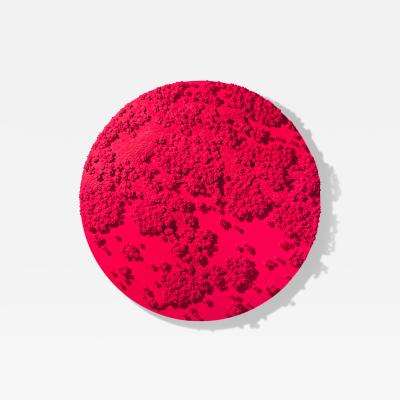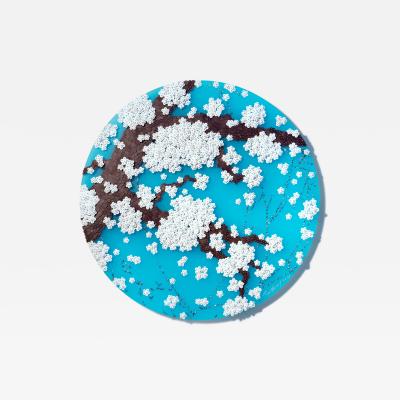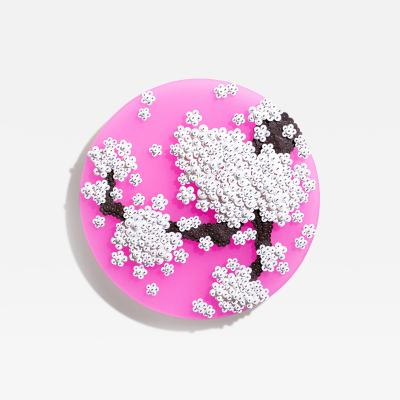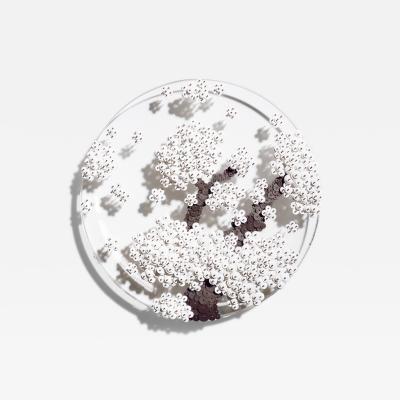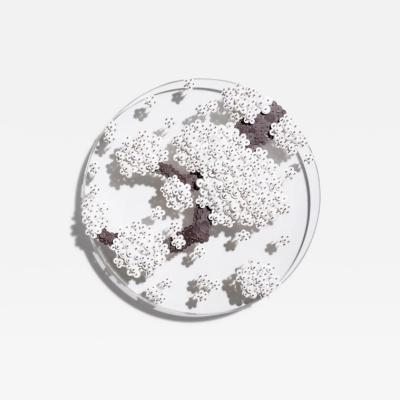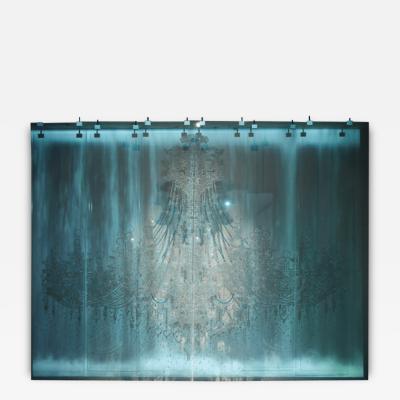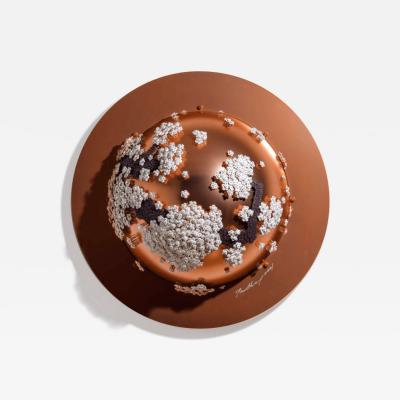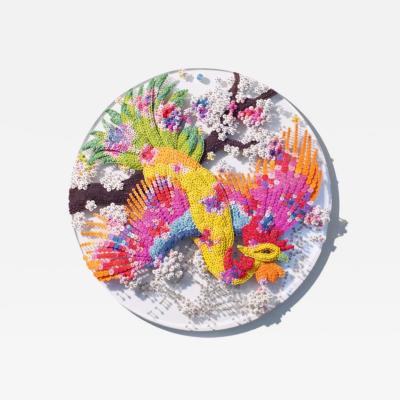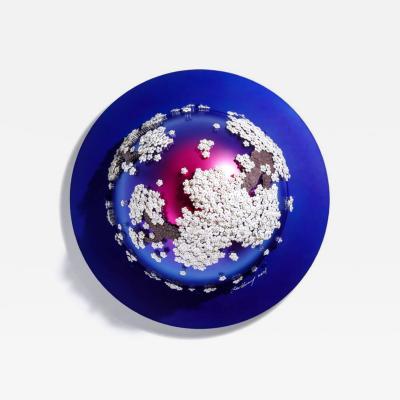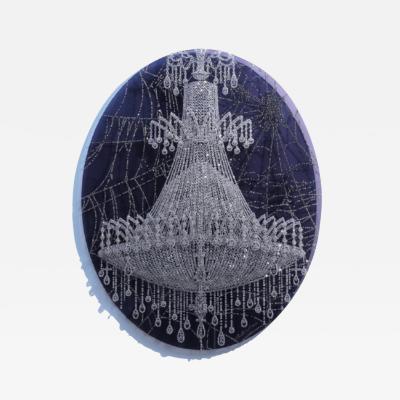Ran Hwang
South Korean, 1960
Artist Bio: Ran Hwang
Ran Hwang is a New York-based artist originally from Pusan, South Korea. Her work embodies a fascination with the cyclical nature of life, the concept of non-visibility, and the ephemeral beauty of glamour. Drawing from her early experiences in the fashion industry and the profound impact of the 9/11 attacks, Hwang incorporates everyday materials into her delicate and dramatic creations.
Central to Hwang’s artistic philosophy is the idea of ‘Sangjeuk (相卽),’ which translates to ‘relation’ and signifies the interconnectedness of existence. This notion emphasizes how contrasting elements depend on each other, forming a cohesive whole. Her work invites viewers to contemplate these relationships within the tapestry of life.
Hwang’s art is featured in prominent collections worldwide, including the Brooklyn Museum, Museum of Fine Arts in Houston, Deji Art Museum in Nanjing, Dubai Opera House, and the National Museum of Contemporary Art in Seoul. Her pieces have been exhibited in renowned venues such as the Asian Civilizations Museum in Singapore, UNESCO Headquarters in Paris, and Mass MoCA in Boston. She has received several accolades, including the Gold Prize from the AHL Foundation in 2004 and the Pollock-Krasner Foundation Grant in 2015. Notably, one of her works is currently showcased in "Singing from the Dark Times" at the 2024 Venice Biennale.
Hwang's educational background includes an MFA from Chung-Ang University and a BFA from the School of Visual Arts in New York. She originally trained as a realist painter, but her signature style began to evolve following the events of 9/11, leading her to use buttons, beads, pins, and thread in her mixed-media sculptures.
Her creative process is labor-intensive; Hwang meticulously hammers thousands of nails into her installations, creating intricate forms that often draw on classical Asian motifs such as trees, flowers, and Buddhist symbols. The repetitive nature of this work evokes a meditative quality, allowing her to explore themes of beauty and impermanence.
Though Hwang’s pieces often reference traditional Asian elements, they are reinterpreted through her unique medium, merging her cultural heritage with contemporary influences, including American icons like Marilyn Monroe. This interplay reflects her identity as an immigrant artist, transforming her background into powerful visual narratives. Her work serves as a reminder of the cycles of growth and decay, with a performative aspect that challenges viewers to consider the transient nature of existence.
Ran Hwang is a New York-based artist originally from Pusan, South Korea. Her work embodies a fascination with the cyclical nature of life, the concept of non-visibility, and the ephemeral beauty of glamour. Drawing from her early experiences in the fashion industry and the profound impact of the 9/11 attacks, Hwang incorporates everyday materials into her delicate and dramatic creations.
Central to Hwang’s artistic philosophy is the idea of ‘Sangjeuk (相卽),’ which translates to ‘relation’ and signifies the interconnectedness of existence. This notion emphasizes how contrasting elements depend on each other, forming a cohesive whole. Her work invites viewers to contemplate these relationships within the tapestry of life.
Hwang’s art is featured in prominent collections worldwide, including the Brooklyn Museum, Museum of Fine Arts in Houston, Deji Art Museum in Nanjing, Dubai Opera House, and the National Museum of Contemporary Art in Seoul. Her pieces have been exhibited in renowned venues such as the Asian Civilizations Museum in Singapore, UNESCO Headquarters in Paris, and Mass MoCA in Boston. She has received several accolades, including the Gold Prize from the AHL Foundation in 2004 and the Pollock-Krasner Foundation Grant in 2015. Notably, one of her works is currently showcased in "Singing from the Dark Times" at the 2024 Venice Biennale.
Hwang's educational background includes an MFA from Chung-Ang University and a BFA from the School of Visual Arts in New York. She originally trained as a realist painter, but her signature style began to evolve following the events of 9/11, leading her to use buttons, beads, pins, and thread in her mixed-media sculptures.
Her creative process is labor-intensive; Hwang meticulously hammers thousands of nails into her installations, creating intricate forms that often draw on classical Asian motifs such as trees, flowers, and Buddhist symbols. The repetitive nature of this work evokes a meditative quality, allowing her to explore themes of beauty and impermanence.
Though Hwang’s pieces often reference traditional Asian elements, they are reinterpreted through her unique medium, merging her cultural heritage with contemporary influences, including American icons like Marilyn Monroe. This interplay reflects her identity as an immigrant artist, transforming her background into powerful visual narratives. Her work serves as a reminder of the cycles of growth and decay, with a performative aspect that challenges viewers to consider the transient nature of existence.
